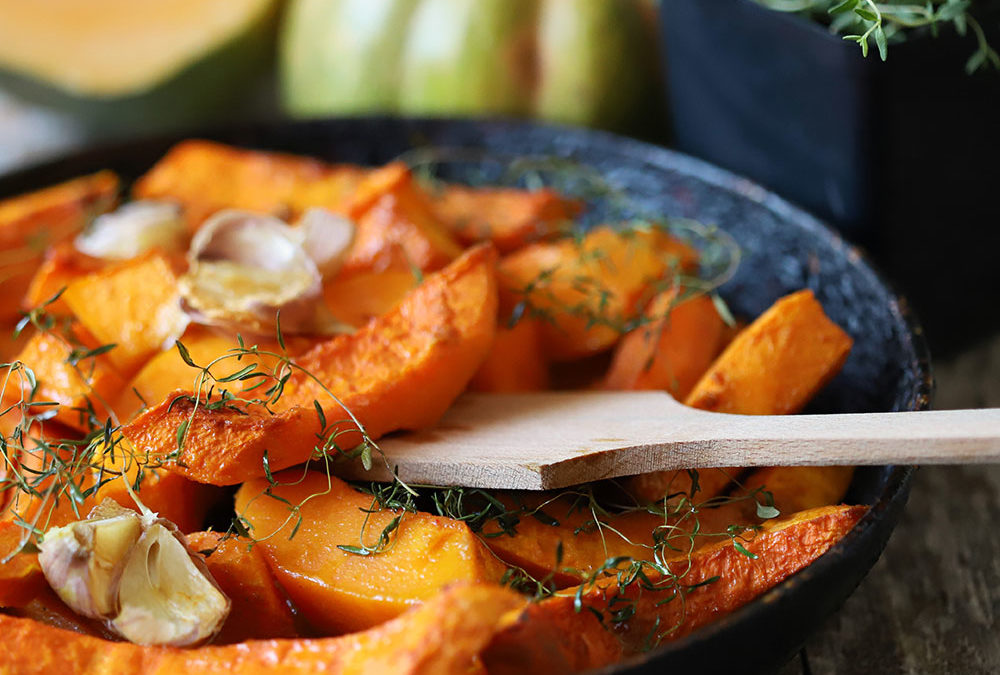A perennial sight in the fall in North America, pumpkin has more uses than just making a great Jack-o-Lantern. Pumpkin is a powerhouse food.
Technically a fruit (because it contains seeds) it’s a high-fiber carbohydrate and is nutrient dense, especially in vitamin A: one cup of cooked pumpkin contains 245 percent of the Reference Daily Intake (RDI). Pumpkin is also rich in vitamin C, thiamine (B1), folate, potassium, calcium, magnesium, copper, manganese, iron, and zinc.
There are more than 20 varieties of pumpkin, including all the winter squashes. The bright orange color of a traditional Halloween pumpkin indicates that it is high in beta-carotene, a carotenoid that your body converts to vitamin A. Pumpkin contains high levels of other carotenoids, specifically lutein and zeaxanthin, which are important for maintaining eye health as we age. These nutrients—in higher concentrations in pumpkin than even carrots—can also help prevent cardiovascular disease and cancer, reduce blood sugar levels and inflammation, eliminate free radicals, and support neurological health as well as the immune system.
Because it is 94 percent water, pumpkin has only 49 calories per cup, so eating this healthful food will help fill you up while providing a lot of important nutrients.
A delicious pumpkin pie is always an option, but other ways to incorporate this fall favorite into your diet are to add pumpkin puree to a smoothie, fold it into your oatmeal, or layer it with yogurt and a high-fiber cereal for a breakfast parfait. Use pumpkin puree instead of oil or butter at a rate of 1:1 in cakes and breads. Pumpkin puree can be used in chowders and creamy soups; try it with Thai curry and coconut milk for something different. Skip the expensive faux-pumpkin latte from your local coffeeshop, and instead try blending a little pumpkin puree into your homemade coffee. And, of course, add that all important pumpkin spice but watch your sugar intake.
Don’t forget the seeds, also known as pepitas. They contain fiber, minerals, healthy fats and protein. After cleaning and drying seeds, toss them in a little olive oil and salt, or a favorite spice blend, then roast at 350 degrees for about 15 minutes. Give them a toss halfway through to prevent over-browning. You can snack on the toasted seeds or add them to salads and other dishes.
Have fun with pumpkins, whether for food or for Boo!
At the NRI, we seek to understand nutrient metabolism and its relationship to human development and disease with the goal of increasingly replacing general dietary guidance with more customized nutrition recommendations. We’re building a healthier tomorrow for you, your children and future generations.
